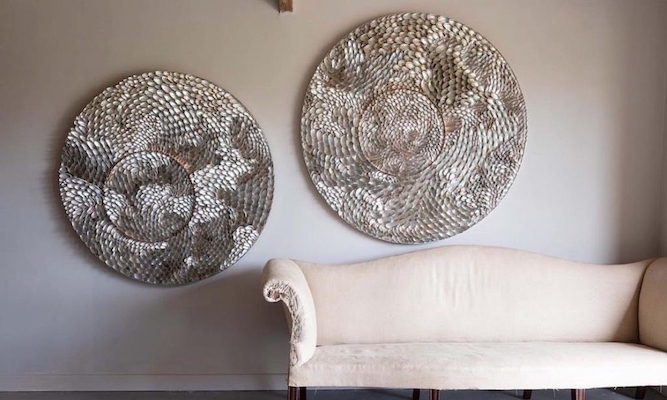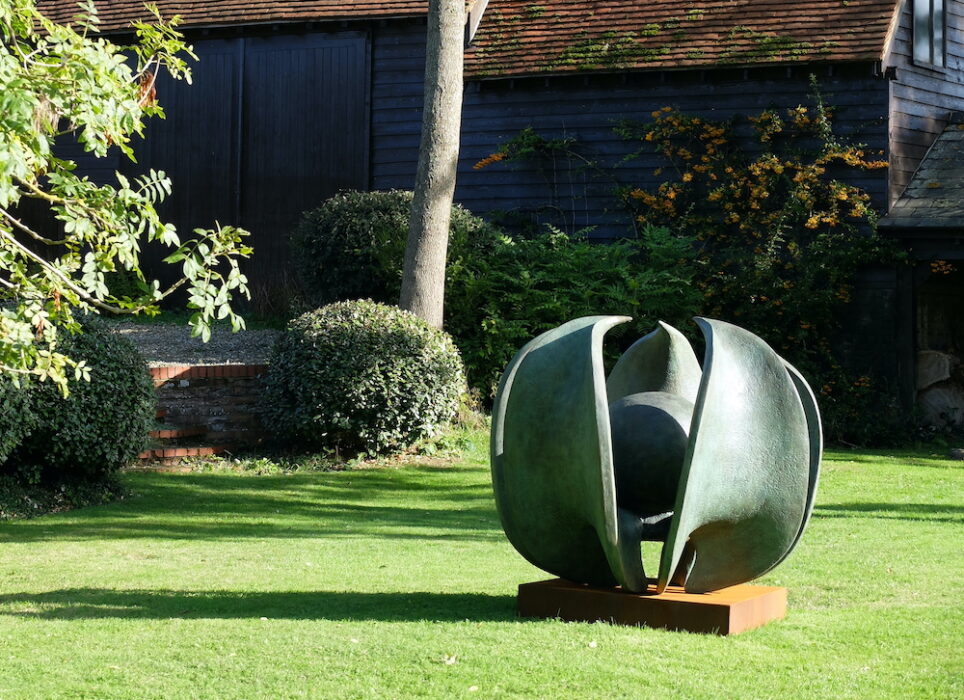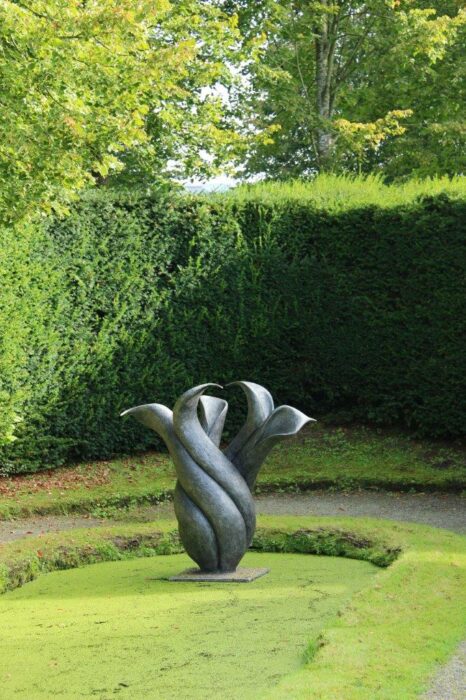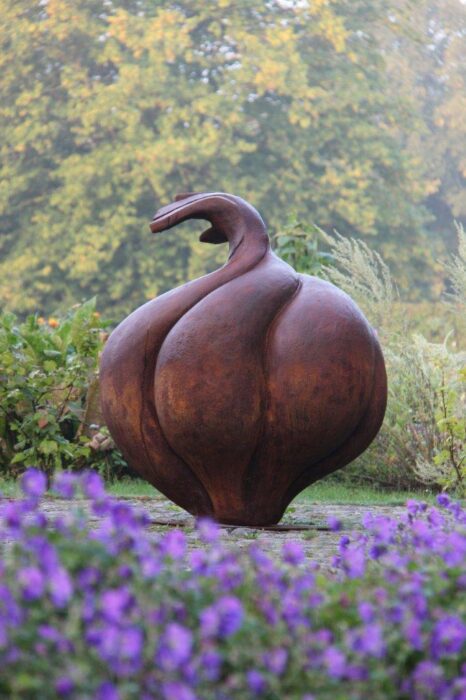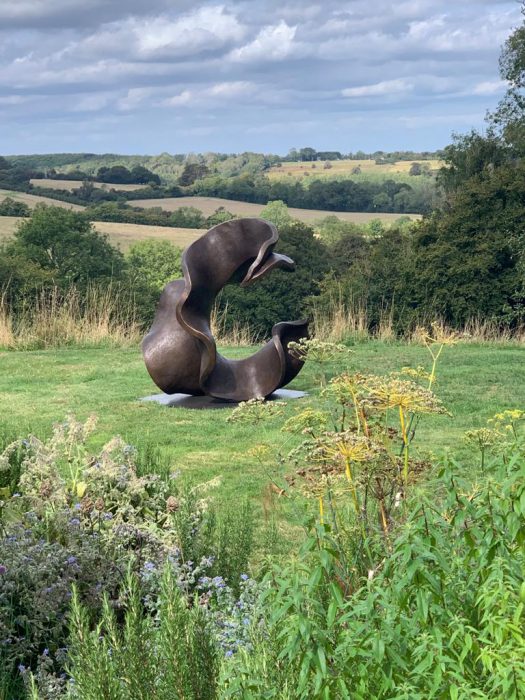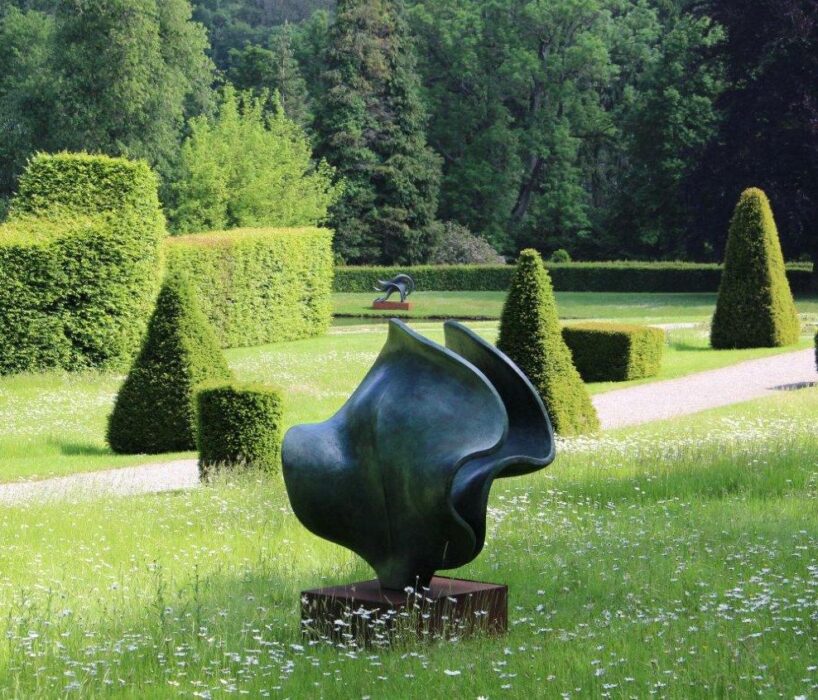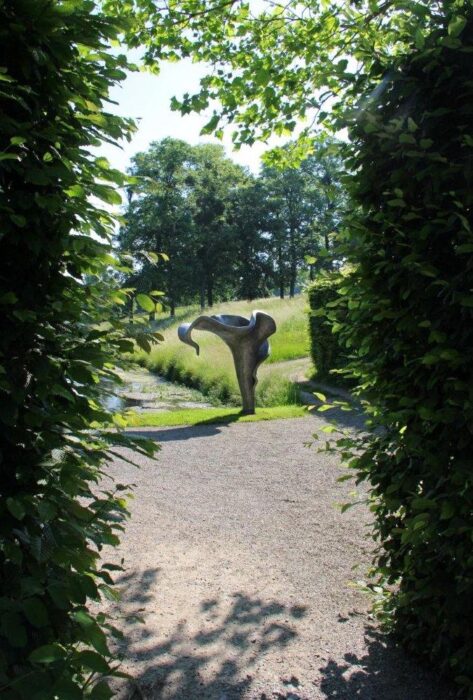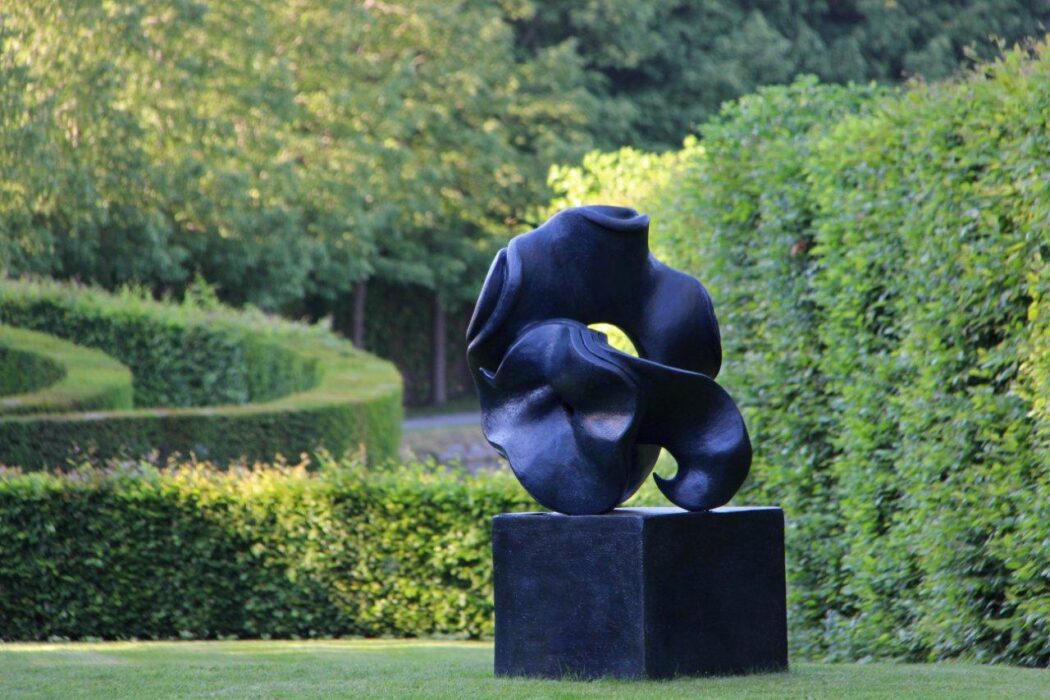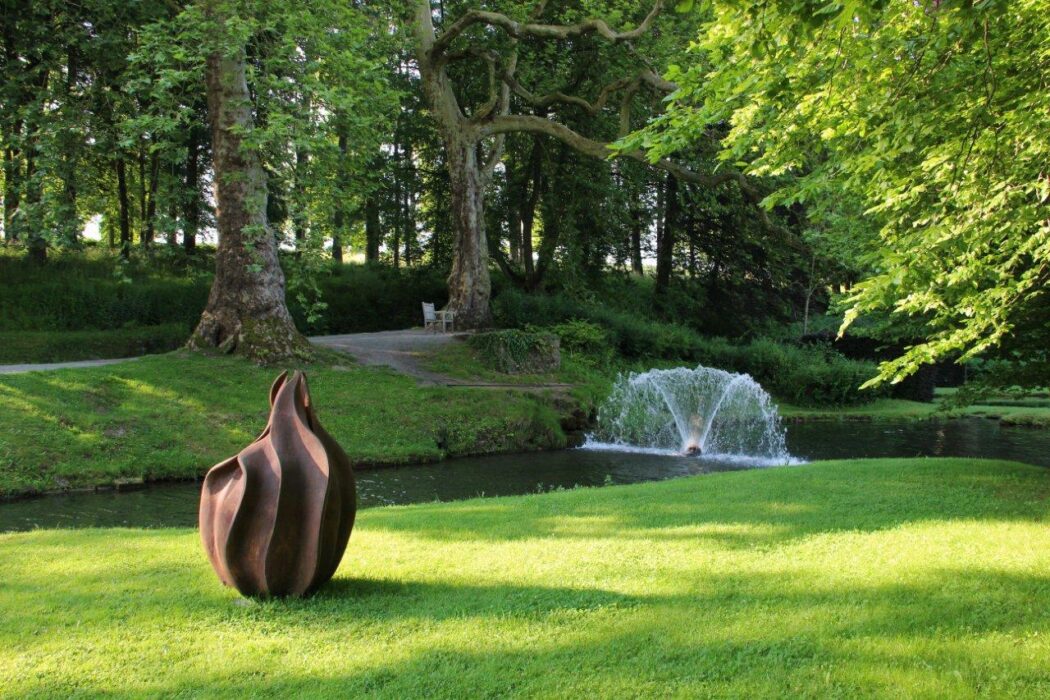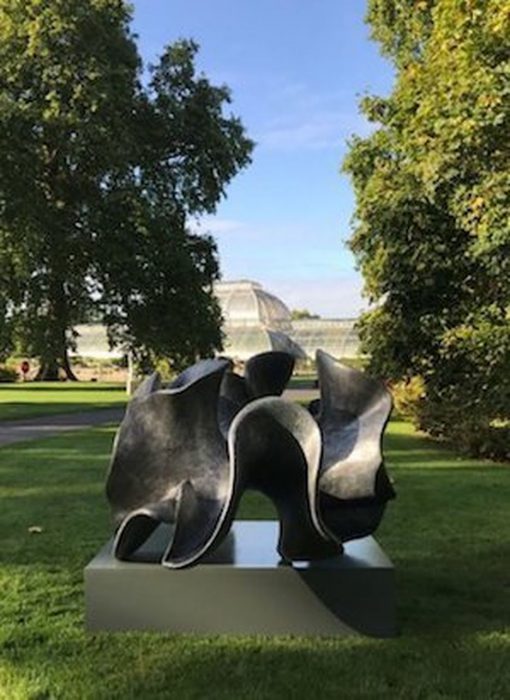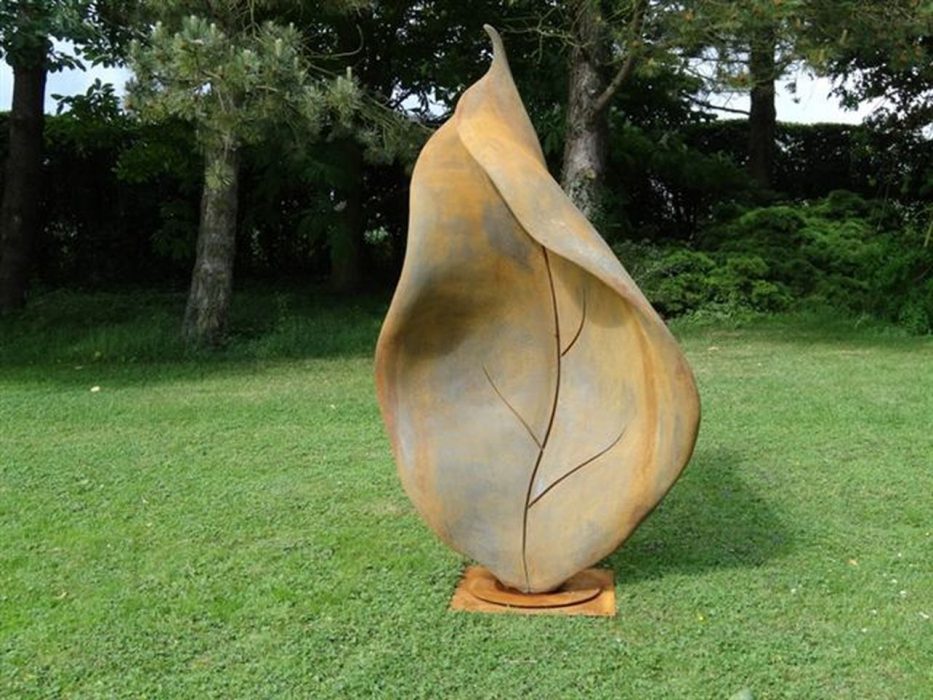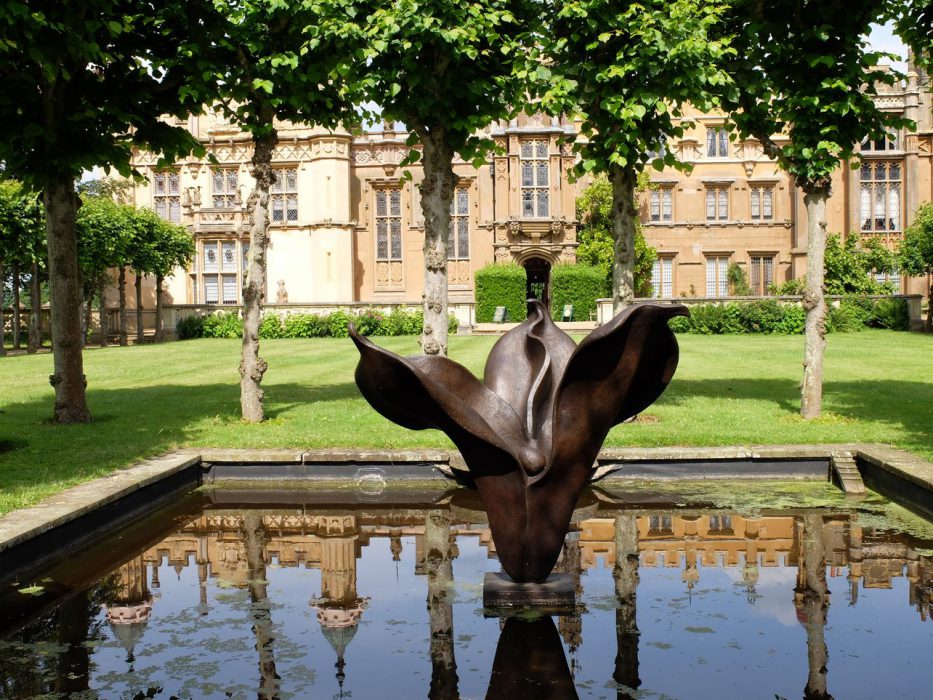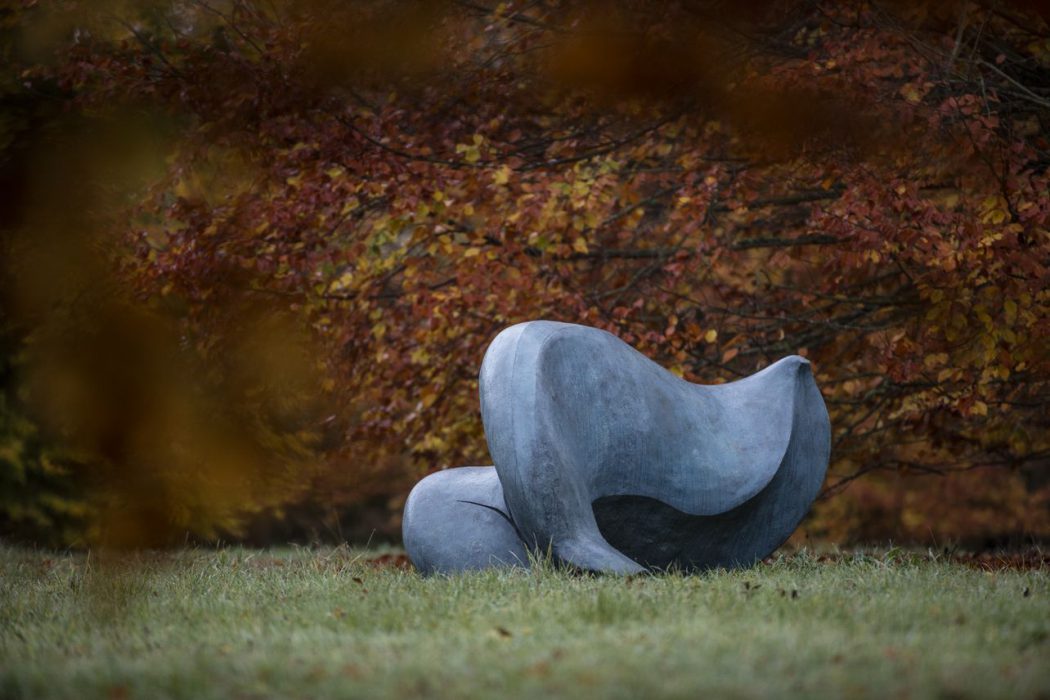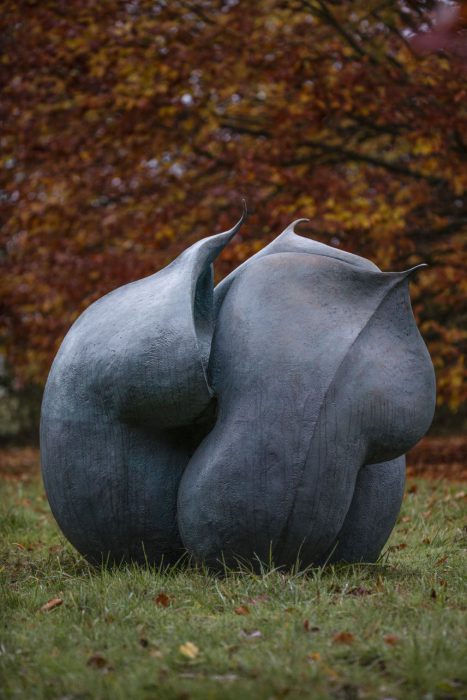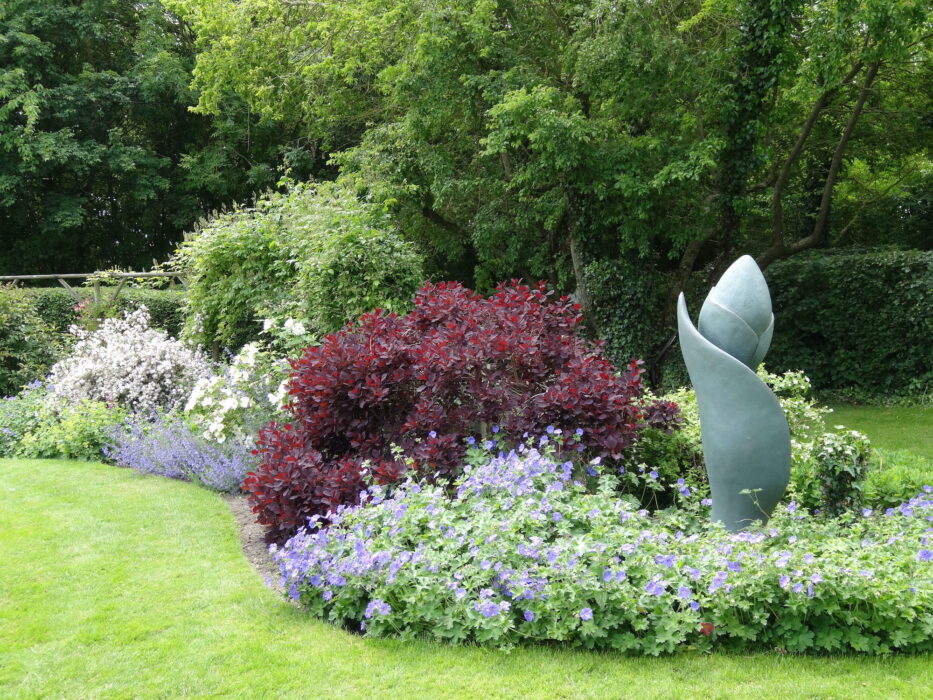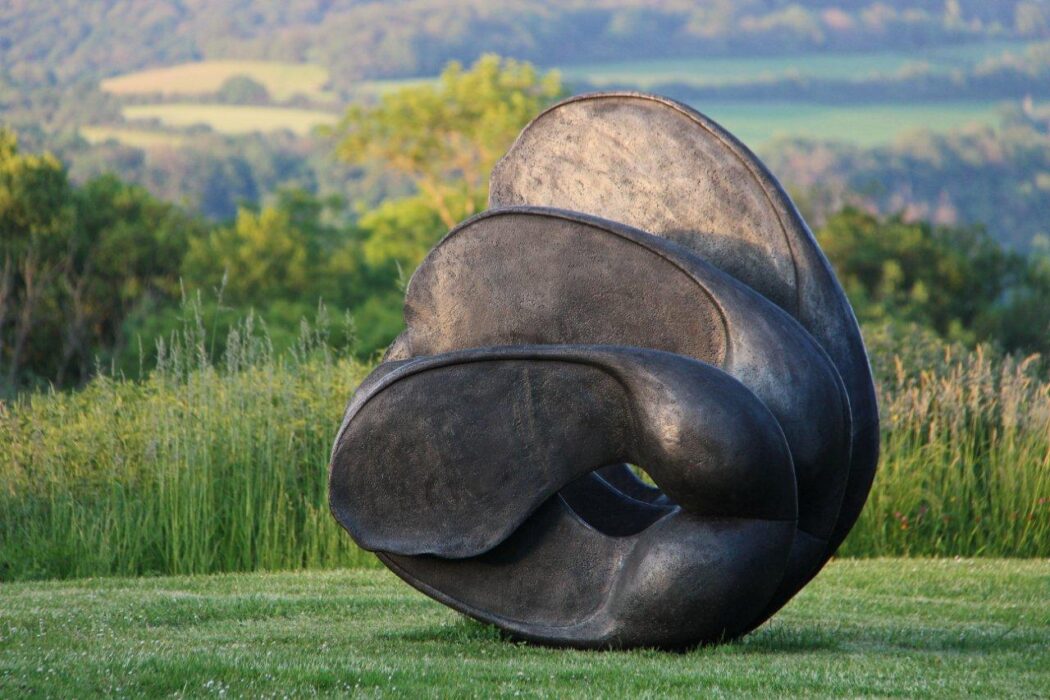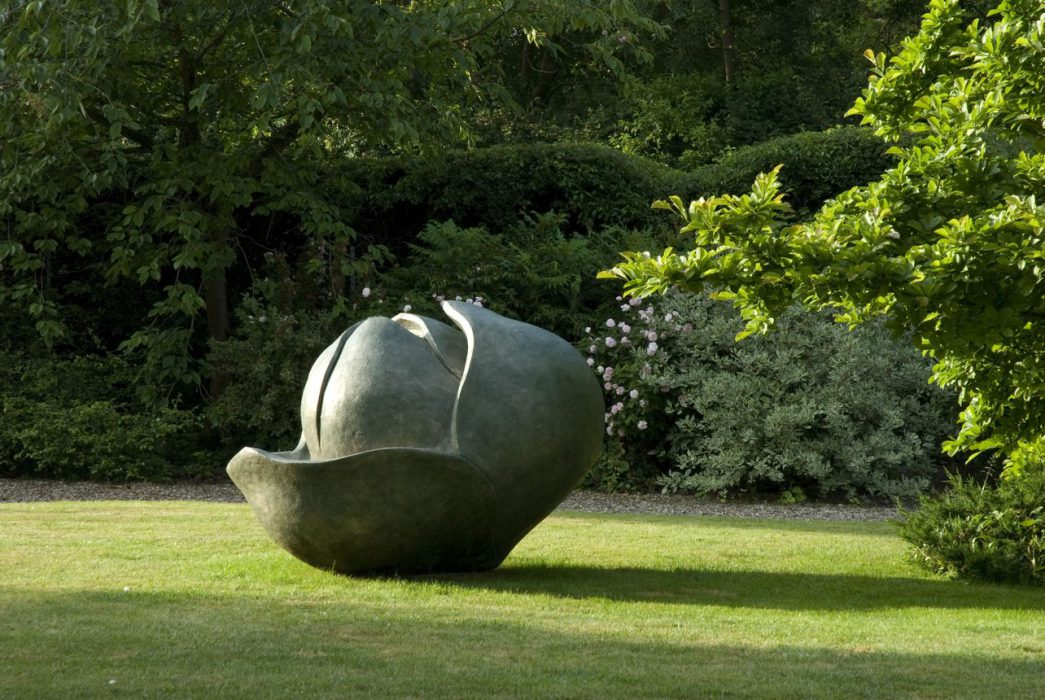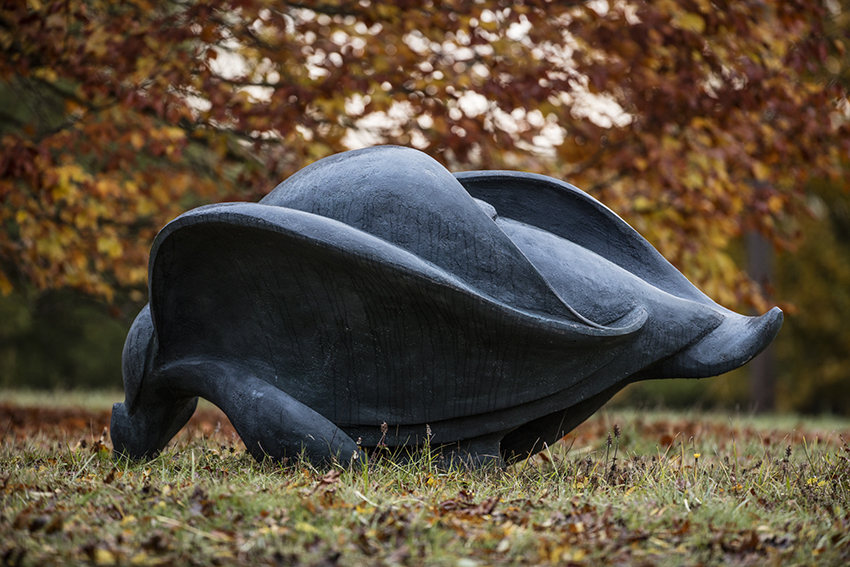Tell us a bit about your studio and set up
My studio is adjacent to my home, which was originally the house for a farm which had been sold off long since though its sheds and outbuildings remained when we purchased the property. Among them is an enormous corrugated Nissen hut which was salvaged from a World War 2 airfield where it was a hanger for Spitfire fighters. It is where I work and it is ideal for me because it is spacious and airy, with lots of light and plenty of space to store blocks of polystyrene and all my previous plaster master and their moulds. The barn has no heating which means that in winter temperatures it can be challenging – so cold that I am usually found working with a hot water bottle strapped across my chest under layers of woollens!
I am also lucky to have a big garden and a couple of paddocks (no longer needed for my children’s ponies and goats after they left home) so I can exhibit my pieces in the sort of setting for which they were designed. I can also move them around according to the seasons and, sometimes, simply to satisfy my artist’s whim!
What is the inspiration and process in developing your work?
I love watching nature unfurl with – and respond to – the seasons. This fascination really began more than 20 years ago when I was commissioned to do an exhibition of paintings in Paris on the theme of the vegetable garden. I sat in our vegetable garden studying, then drawing plants. I owe a lot to a very lively courgette which seemed to grow under my very eyes – by the time I had got the first lines of a leaf down on the page the entire leaf had moved! It was the sense of pent-up irrepressible energy which hit me. The more I studied plants the more I was struck by the pattern of growth which, to my mind, answered a mathematical formula.
I first got into my large-scale outdoor sculpture through stone-carving. With such a hard material you have to simplify and capture the essence of an object – even a leaf or seed pod. I graduated to bigger sculpture because the small-scale pieces seemed to be more decorative rather than to have real presence. I wanted to sculpt things which had something to say and made a strong impact. Around 12 years ago a friend who worked as an assistant to Henry Moore suggested I try polystyrene. It was a stroke of inspiration – no complicated pulleys and machinery and no assistant: in fact, just me! Polystyrene and I have formed a real bond and I have never looked back. Virtually all my pieces start their life in polystyrene.
Wherever I walk – in the garden, walking the dogs here in England or along the dunes by the shore in France- I have an eye out for exciting organic shapes found in seed-heads, leaves or buds. This is not a static, symmetrical pattern but bursting with curves, spiral, a slight imbalance, a sense of latent energy about to break through. To see exactly how it works, the mechanics of it, I need to draw it, which allows me to understand its construct. Of course, being inspired by an organic shape, does not mean copying exactly. At the stage of drawing, I try to respect the original because it is essential to understand the actual mechanics of growth/maturation. But, as I progress, there is inevitably the input of the artist, i.e. simplification, paring down, research of the essential. In two words, the artistic creation. Then I create a maquette in wax or clay, bigger. The clay maquette will need to be hollowed, dried and fired. This adds several more weeks to the process.
Once I have all these preparations in hand, I decide the size of the block I will want to work on. It can take several blocks attached together to achieve the right volume. I have learnt over the years that there is an ideal size for garden sculpture; big enough to make a statement, not too big so it does not overwhelm its surroundings. I establish the measurements of the polystyrene block, then the measurements of my maquette, then divide the one by the other, thus getting the rate of enlargement. On the maquette I mark out the salient points and carefully translate them to the block. This is the tricky bit because any approximation can prove a real headache at the final stages. This is what threw me when I was working on Escapade. I had to improvise a bit because it is such a complex shape, very challenging. I had serious problems to overcome some errors but succeeded in the end!
I then sketch the essential architecture of the piece onto the block of polystyrene. When it comes to the cutting, I do this prudently in stages, using a hot wire which looks a bit like pulling a flexible cheese wire through butter. However, while polystyrene offers me a manageable material to work with it does have a flipside, so I will be found wearing a gas mask inherited from my son’s time serving in the Navy on a nuclear submarine! Once the piece has been cut it needs rasping, rasping, rasping, by prudent and polishing: this, in turn, requires a dust mask because if those fragments get into my lungs they will never be expelled.
Tell us about your background and how that informs your work?
I studied political science in Bordeaux where I grew up, then went to the Sorbonne in Paris to read History of Art. I became fascinated by sculpture and wanted to pursue, in particular, my interest in ancient Egyptian art. The best place to do that was Oxford University, where I arrived with pretty fragmentary English. I was soon exhilarated by the whole atmosphere of the university. The attraction of Egyptian sculpture for me was its enormous inner power – almost a magic power – more so than any other body of sculpture.
It was around the same time that my interest in sculpture began to blossom. In 1989, I started studying with Rosemary Barnett, until recently Head of the Frink School of Figurative Sculpture. I love making portraits, and the process of getting to know my subject. It was particularly fascinating to work on commissions for busts of Roy Jenkins, Michael Heseltine, and John Major, for the House of Commons collection of leading statesmen.
However, after working for several years on the human figure, I found myself once again drawn back to nature and embarked on a new journey of discovery towards the body of garden sculptures I have amassed today.
What are you reading? What are your wider interests and do these inform your work?
My great love is the history of trade. One of my favourite books is E.H.Parry’s The Age of Reconnaisance while Peter Frankopan’s The Silk Road and The New Silk Road have been hugely enjoyable. I have recently learnt Italian and my fiction reading is pretty well exclusively Italian novels. There is a huge pleasure in discovering literature in the original language: I experienced the same pleasure at Oxford when I was able to read English books in the original.
Where are your sculptures?
My sculptures have made their way to private buyers and public collections in the USA, Canada, Thailand, China (where I travelled to see La Promesse in situ), the Continent and, of course, in England. A highlight was also to be invited to show The Keeper of the Place at the Venice Biennale (2017). The most extensive collection in one place is in my garden and of course together we have enabled clients to take their time and consider. I always enjoy discovering how other people experience my sculptures.
Have you got a new piece in development?
Last summer I spotted an aquilegia seed-head in a friend’s garden. Its twisted shape really excited me. It is now in the process of being cast in resin. I have called it Escapade because I like the sense of life bursting forth and it answers my own mood after months of lockdown.
One of my treasured possessions is a letter you wrote to me, reminiscing about a conversation across the dining table and expressing the pleasure working together has brought over the years.
Well of course I have known you all your life and you still have the framed sketch I made of you on holiday when you were 12 or 13, soon followed by a terracotta portrait (before I moved on to your grandfather and parents) now in your sitting room.
I recall that conversation when you offered help and guidance with the presentation and marketing of my work. Your support has been invaluable, particularly with looking after clients and organising challenging overseas sales to places which require getting to grip with and discreetly sorting out the niggles that can arise along the way.
I appreciate your elegance in serving the requirements of clients and advising them on all matters such as finish, position, display and installation, while giving a professional and personal service to me. I see us as a partnership – and a jolly efficient one!


